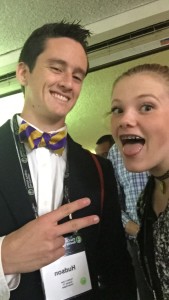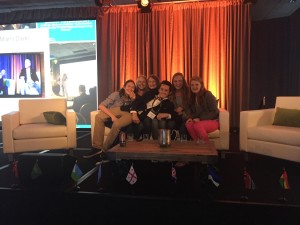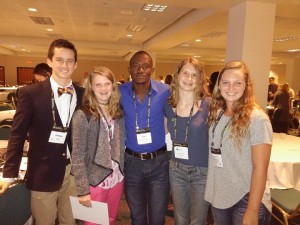Portugal. The Man: Trust the Native Alaskans
My friend John Gourley is, by his own admission, not a scientist. He is, however, a Native Alaskan and is today the lead singer of one of the most popular alternative rock bands on the planet: Portugal. The Man.
I had the opportunity to hang out with John after his recent set during Riptide Music Festival on Ft. Lauderdale Beach and I think his comments are some of the most important that I’ve ever shared with readers of my blog and am pleased to share part of my interview with you.
Before becoming the lead singer of a world famous rock band, John spent his childhood in rural Alaska. His childhood in the 80’s and 90’s was much different in many ways than for kids growing up in a big city like Miami or Ft. Lauderdale. While he did not have internet or Netflix or other modern devices, he filled his time skateboarding, snowboarding, exploring the outdoors, and tending to his family’s pack of Iditarod racing (mushing) sled dogs.
John knows and loves the Alaskan outdoors, but he is deeply concerned that it is disappearing before his and his friends very eyes because of climate change.
Alaska is a challenging state because it is filled with so much abundant nature and as John says, “it’s easy to overlook the impact of climate change while there is still so much rural environment remaining”. It’s also challenging because the oil industry has a significant stake in producing and then transporting their products, but John knows that the Alaska that he loves is melting away and he told me that he worries about what will be left of that magnificent place when his daughter grows up as “more of the coastline melt[s] away”. Speaking of coastline, the state of Alaska has the largest amount of coastline of any state in the United States and Florida, including that beach where John’s band performed, has the second most coastline.
John’s message is a strong one and includes the suggestion that we listen to people in places like Alaska who are living with the impact of climate change right now, people like John and his friends, and especially indigenous people like Native Alaskans. As John explained, “It’s easy to be ignorant to this stuff or naive and just not see it, but trust somebody who’s been around it and grew up in a place that you think is cold. It’s not cold year-round anymore. Alaska’s not cold anymore. Trust the Native Alaskans. People who have been there for thousands and thousands of years.”
Almost two years ago I had the honor of giving a keynote address at the Florida Atlantic University Sea Level Rise Summit: Alaska to Florida after which I received a standing ovation and later learned that some in attendance actually cried while listening to my comments. At that time I could not fully understand the reaction or the emotion from the several hundred esteemed professionals that were in attendance – scientists, educators, and policy makers including many who had flown in from Alaska for the symposium. That is until yesterday when John portrayed so vividly what he has been seeing and explained it as if it were one of his songs.
John talked, for example, about the city of Shishmaref, Alaska and how climate change there is obvious to the naked eye; “I mean that’s where you really see the effects of climate change. That’s where you see the permafrost melting, you see the island melting… it’s just an island and you see it melting away into the water and you see houses falling into the water.”
Like John said, he’s not a scientist but that does not mean that he doesn’t have eyes or want to see the climate change crisis addressed for himself, his daughter, and future generations. When asked about climate change and sea rise, Florida’s governor Rick Scott also says that he’s not a scientist but he does this to avoid talking about what’s happening to our state. And yet non-scientist Governor Scott leads a state where places like Miami Beach ($450 million) and the City of Miami ($200 million) are spending huge sums of money to begin addressing the sea level rise problems caused by our global climate change crisis that people all over South Florida – most of which, I might add, are also not scientists either – see with their own eyes and leads me to ask and wonder why ‘leaders’ like Governor Scott avoid this so very important issue. It can only be because of politics and that, in my view, is terribly shortsighted given that the climate change crisis is likely the biggest issue that my generation will ever face.
Pretending to not see what’s happening does not solve the problem, because climate change is not about donkeys or elephants, red states or blue ones, it’s much more important than politics.
As John said about what he’s been seeing and why we must set politics aside and focus on solutions before its too late, “It’s not normal. It’s something that we’ve all seen. Just leave the political views aside and just look at science and just trust it. Science is based on fact. Politics are based on the guy down the street that paid me to give a speech. Don’t let politics be a part of it.”
As I said at the end of my interview with John, I can’t say it any better than that, nor agree more. Rock on Portugal. The Man, and thanks again, John, for being so passionate and public about this important topic.
To learn more about Portugal. The Man, please check out the Miami New Times article and while you at it consider listing to some of their most excellent music.




